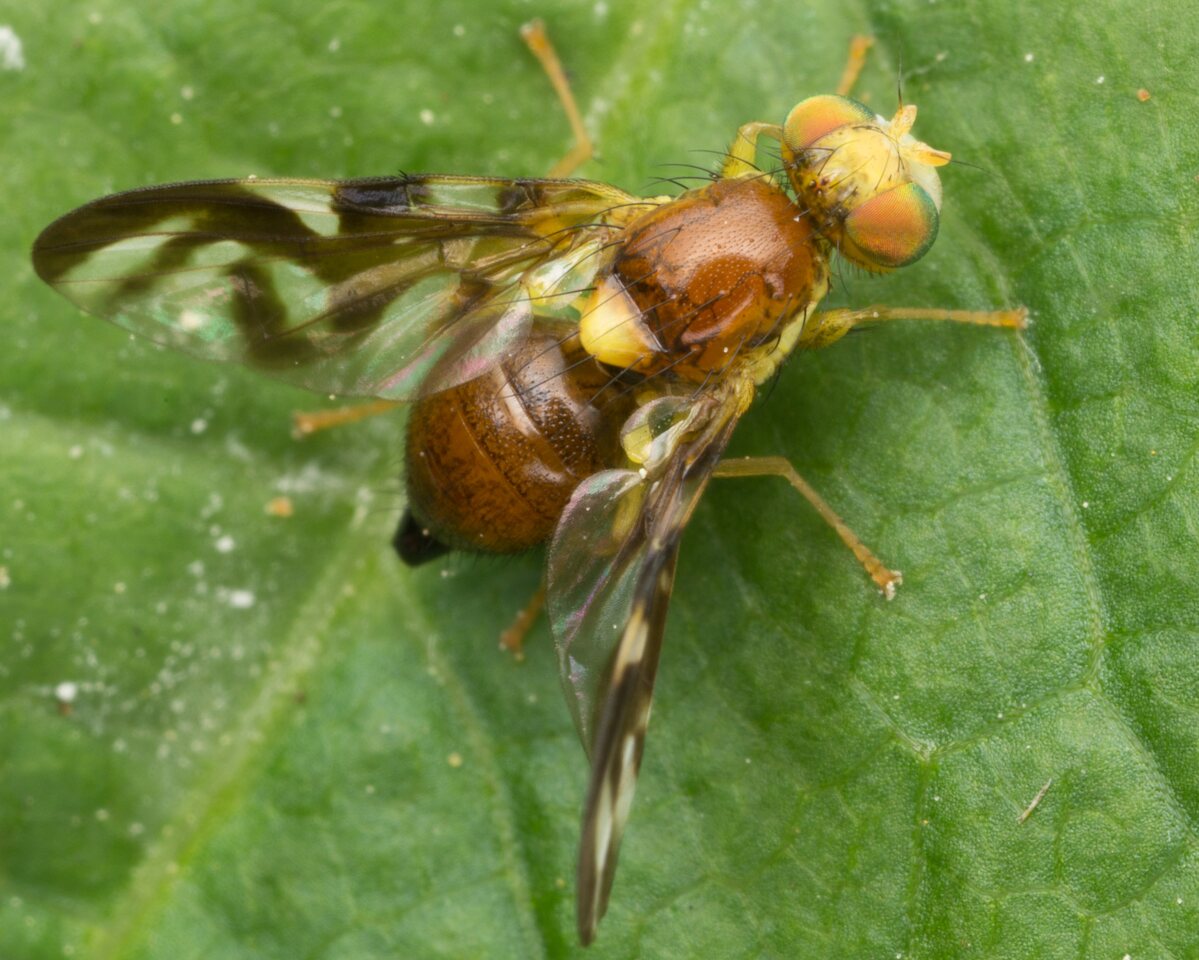
Euleia heraclei · salierinė minamusė
DE · Selleriefliege
PL · liściolubka selerowa
https://en.wikipedia.org/wiki/Euleia_heraclei
Adults can be found from April to September feeding on hogweed (Heracleum) - hence the specific name.
The females lay the eggs in April and May into the leave of the host plants, a few eggs in one leaf. After 6–8 days, the eggs hatch and the larvae mine the leaves, initially in a short corridor and later, a yellow or brown blotch. After four weeks, adult larvae enter into the soil at a depth of 4–5 cm. The second-generation larvae appear in July–August and overwinters in the upper layers of soil, at a depth of about 10 cm.
Larvae feed on the leaves of a wide variety of plants, especially of Apiaceae species.
They are considered a pest of celery (Apium graveolens) and parsnips (Pastinaca sativa), where they damage the plant by mining the leaves.
3212